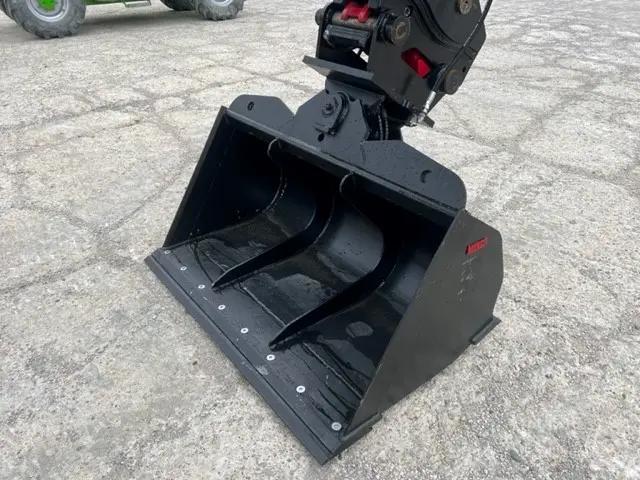Types of Excavator Buckets and Choosing the Right Ones

Your bucket can make a difference in getting the job done right. Whether it's for digging trenches, moving earth, or precision work, the bucket you hook up to your excavator matters big time.
Whether you're behind the controls every day, managing a fleet of these beasts, or just have a thing for heavy machinery, we will break down the different kinds of excavator buckets and why nailing that coupler choice is your first step to a job well done.
Choosing the Right Coupler: The First Step
Before you even think about buckets, there's something essential you've got to lock down: the coupler. It's the part between your excavator and whatever bucket you choose. And some excavators aren’t equipped to handle a hydraulic coupler. Get this right, and you're off to a great start.
A coupler, in simple terms, is the part that connects the excavator arm to the bucket for easier swapping between different attachments. It’s not technically necessary if you aren’t going to be swapping out your attachments.
Think of a coupler as a quick-change artist. It allows you to switch from one bucket type (or other attachment) to another, adapting your excavator for various tasks without a hassle.
The coupler is a crucial component of your excavator setup, linking the arm to the bucket. Here’s a quick look at the two types: mechanical and hydraulic couplers.
Mechanical couplers, sometimes called manual couplers, are simple and cost-effective. Ideal for operations where bucket changes are infrequent. They require manual pin removal and insertion, which is straightforward but time-consuming. It might take multiple people to remove and add attachments on larger machines.
Hydraulic couplers, also known as quick couplers, allow for rapid bucket changes, often directly from the excavator cab. Your operator won’t have to stop what they’re doing to get in and out of the excavator. They offer time-saving benefits for jobs needing multiple attachments.
Choosing the right coupler for your operation prepares you for everything you do next with your excavator, ensuring you’re ready for whatever task.
Different Types of Excavator Buckets
Alright, now that you’ve got the coupler situation sorted, it’s time to talk buckets. Excavator buckets are more than just big metal scoops. Depending on their design and build, they can do many different jobs.

Digging buckets are probably the most common buckets you’ll see. These fan favorites have teeth that can cut through various materials, making them an important part of any excavation project.

When it’s time to tidy up and fine-tune, the ditch-cleaning bucket enters the spotlight. This bucket isn’t about the rough-and-tumble; it’s about precision and neatness, especially when you're working on creating or maintaining ditches and slopes.

It’s more than just a cool name. With its unique design and specific uses, the skeleton bucket is a must-have for certain projects where sorting and sifting are needed.

When it’s time to face the hard-hitting jobs, the rock bucket steps up to the plate. This robust and rugged bucket can handle some of the toughest tasks in excavation, where strength and endurance are non-negotiable.

Tilt buckets add a new dimension of flexibility to excavator work. With their ability to tilt side-to-side, they bring an enhanced level of precision to tasks that standard buckets might struggle with.
Matching Bucket Types to Project Needs
Selecting the right bucket for your excavator goes beyond just finding a fit. It's about choosing a bucket that aligns with the specific demands of your project, thus ensuring efficiency, reducing wear, and positively impacting project timelines. Here's a guide to help you select the ideal bucket for your needs.
Maintenance and Care for Excavator Buckets

Taking good care of your excavator buckets isn't just about keeping them looking nice; it's about extending their life and ensuring they perform at their best. Regular maintenance and proper care can save you from costly repairs or replacements down the line. Sometimes, replacing a smaller bucket is less expensive than repairing it. But cracks should always be addressed ASAP. Plus, well-maintained buckets mean more efficient and safer operations.
Maintenance Tips for Excavator Buckets:
Get Started With Buckets
The right coupler and bucket combination will help you reach your excavator's full potential and beef up your attachment arsenal. Whether digging, grading, or trenching, the correct setup ensures optimal performance and efficiency. Always weigh your project needs carefully, and don't hesitate to seek expert advice to make the best choice for your specific requirements. In the end, a well-matched coupler and bucket can make all the difference in the success of your excavation tasks.
Shop Buckets
